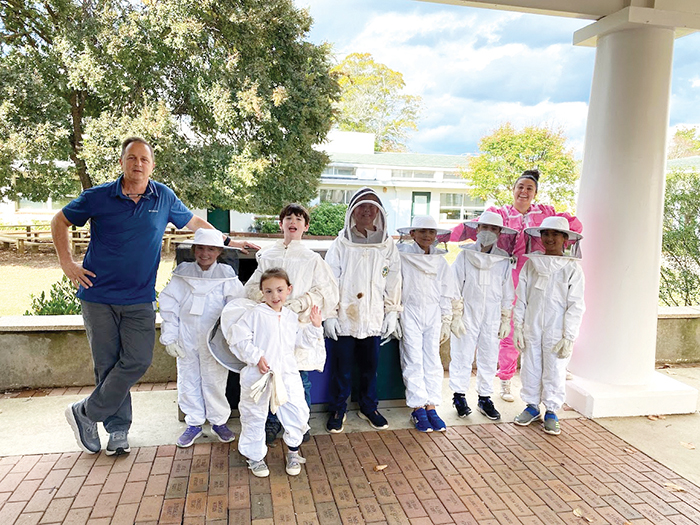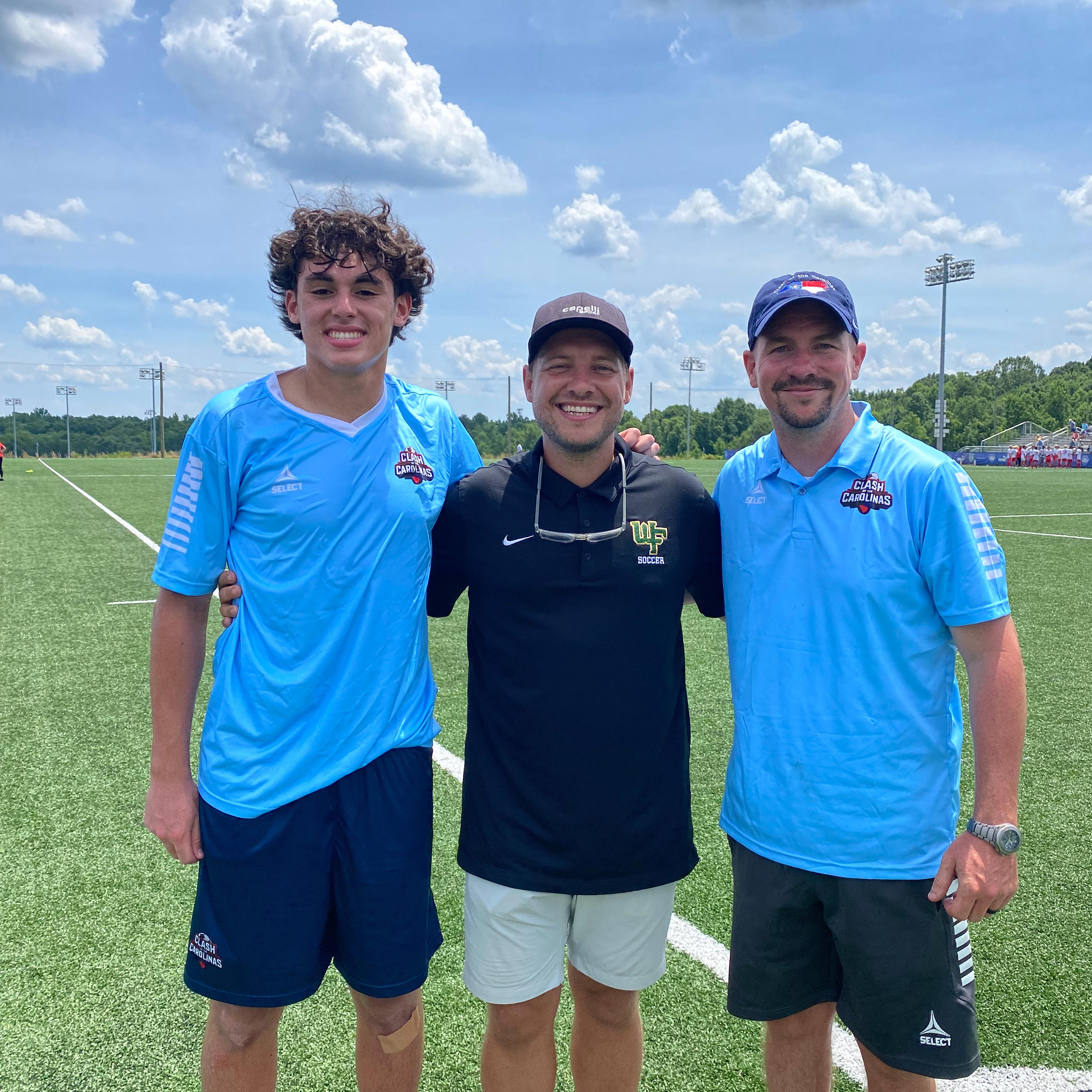Your Neighbor: Chris Culp Sr.
Published 12:05 am Thursday, March 20, 2025

- Chris Culp, left, with Summit School students and beekeepers along with fellow Summit teacher Beatriz Gurgel-Burns.
|
Getting your Trinity Audio player ready...
|
By Mandy Haggerson
As the director of technology at Summit School, Chris Culp wears many hats in his role. Known for always being an innovative presence on the school’s campus, Culp loves thinking of new ways for kids to experience learning.
“A colleague of mine, Jason Felten and I had discussed back in 2014 how it would be interesting to bring bees on campus with the kids. I had always been interested in beekeeping, and of course who doesn’t love honey?” said Culp. “Jason began learning more through the Forsyth County Beekeeping Association (FCBA) with their training courses (held annually in the spring and winter). I took several undergraduate courses at North Carolina State University that were just fascinating with great professors.”
In the spring of 2014, Felten and Culp began to figure out what needed to be done to get their new project rolling.
“Our first bee yard was in a fenced-in area that was vacant. We ordered packages of bees, equipment from bee suppliers and involved the kids in every aspect that we could,” said Culp. “Learning early on that if you lose about 30 percent of your bee population from one year to the next is ‘normal’ was tough for us all.”
What Culp also learned was that kids and teachers enjoyed learning from both their successes and failures.
“We ended up harvesting enough honey that we were able to use it to pay for whatever supplies that we needed the following year which included purchasing bee suits for the students. We now have about 20 beekeeping suits,” said Culp. “We also keep a steady supply of our local honey for purchase.”
Wanting to bring more opportunities for the kids to experience the bees into the classroom, Culp decided to do just that.
“We learned how you could make a beehive that goes into the wall of the classroom. It allows the bees to come and go, and also the students to observe them up close without having any fear. That was about three years ago, and we have five areas of focus with our bees throughout the campus, several science classrooms and even one kindergarten room,” said Culp.
Every time Culp and the students have come up with new improvements, they’ve changed the name of the project from 1.0, now being on 4.0.
“Through our observations and improvements, we have become very proficient at not spending money. For instance, we have created hive traps which were built by the students in order to relocate swarms during their swarm season. We know which trees seem to attract the most bees, and we’re able to carefully take them to our observation areas with scientific research,” said Culp.
With it being peak swarm season, Culp is often getting calls to relocate bees.
“I’ve been on the swarm list for quite some time now with FCAB. Trapping is great because it allows bees to swarm naturally and provide an external way to reproduce colonies. Not only has it taught key scientific elements to providing homes to the bees, but it also teaches students to be resourceful and economical. They get excited by that aspect too,” said Culp. “We relocated about seven swarms last year.”
Another important teaching element has been dispelling myths and misconceptions about stinging insects.
“A lot of people don’t know the difference between bees, wasps and yellow jackets. Educating students about the science behind it will also help them reduce their chances of having a bad experience in the future,” said Culp.
Culp has been grateful for the teacher partnerships that have brought even more buzz on campus to the project. Libba Reynolds and Beatriz Gurgel-Burns have brought a lot of excitement and interest to the beekeeping program. They have even built part of their curriculum around it.
“It is contagious with the kids when the teachers get excited. Last year, we had some students go to the Georgia Sea Turtle Center. There they learned how doctors used propolis, also referred to as ‘bee glue,’ to treat injured sea turtles with its antimicrobial properties. With the collection and processing of the resinous substance by honeybees to seal cracks and protect their hives, it can also then be used to make a difference in healing with the sea turtles too,” said Culp.
The connection with the Georgia Sea Turtle Center on Jekyll Island has continued.
“I’m getting ready to send another bag to them this spring after that connection made by our students. What is neat, is this also ties into how Native Americans first discovered the value of propolis, and many of the methods they used to extract it and then use it. Many of these methods have not changed with how we use it today. There’s so much to learn from a historical and scientific perspective. The students also enjoyed seeing the live application of the propolis via a Zoom call when the doctor used them to care for the sea turtles,” said Culp.
As swarm season continues, Culp is optimistic that beekeeping will continue to encourage kids to view science as fun.
“COVID-19 actually did a good thing for the beekeeping industry. Prior to COVID-19 the average age of a beekeeper was around 68. That has since changed, and it is helpful to create excitement and new energy around it. Every time I speak to a beekeeper, I learn something new. It’s an old-world skill that will always be needed,” said Culp. “I also remind students that it doesn’t take much of a concentrated effort on something to make a big difference. I’m inspired how much they want to be that difference.”




